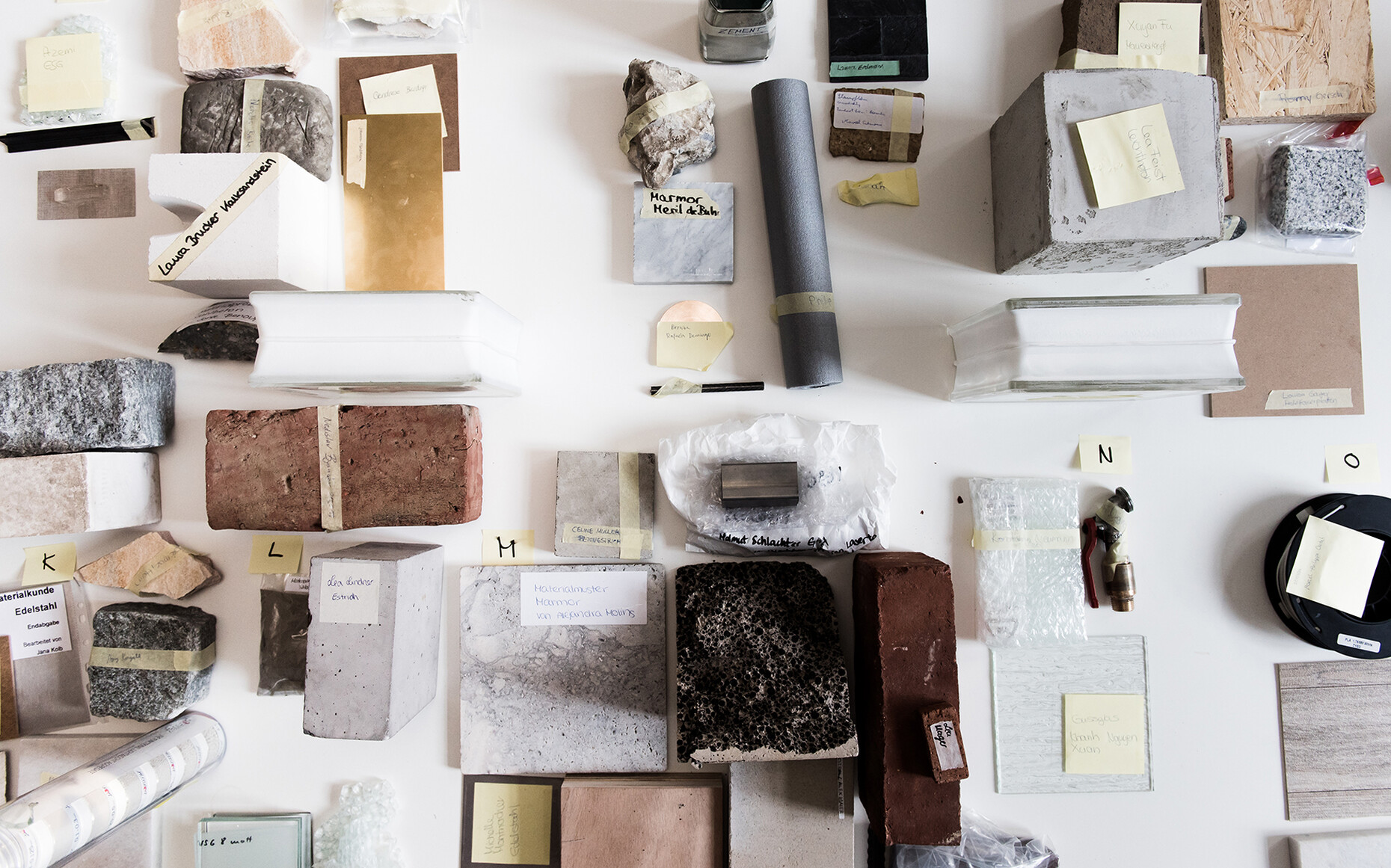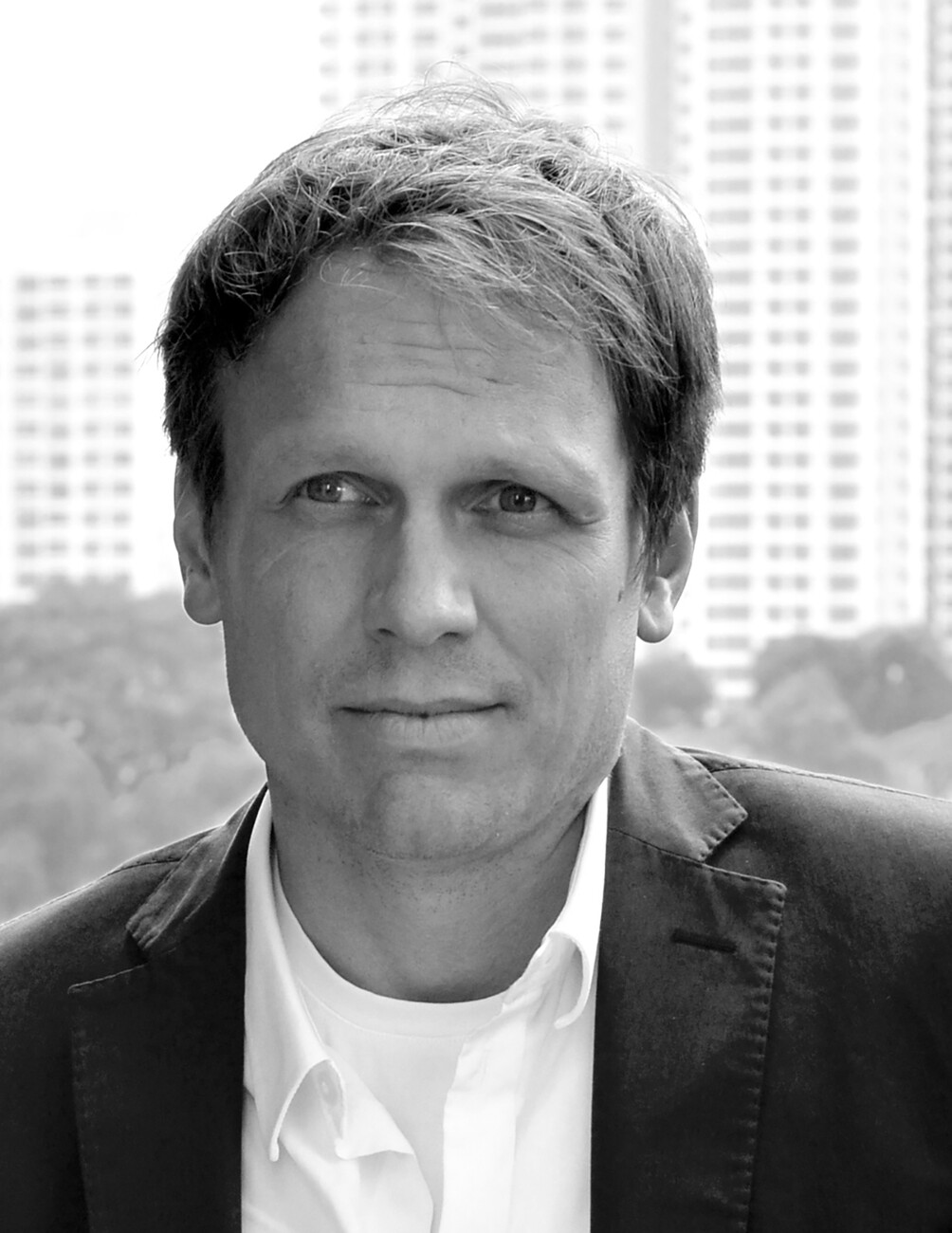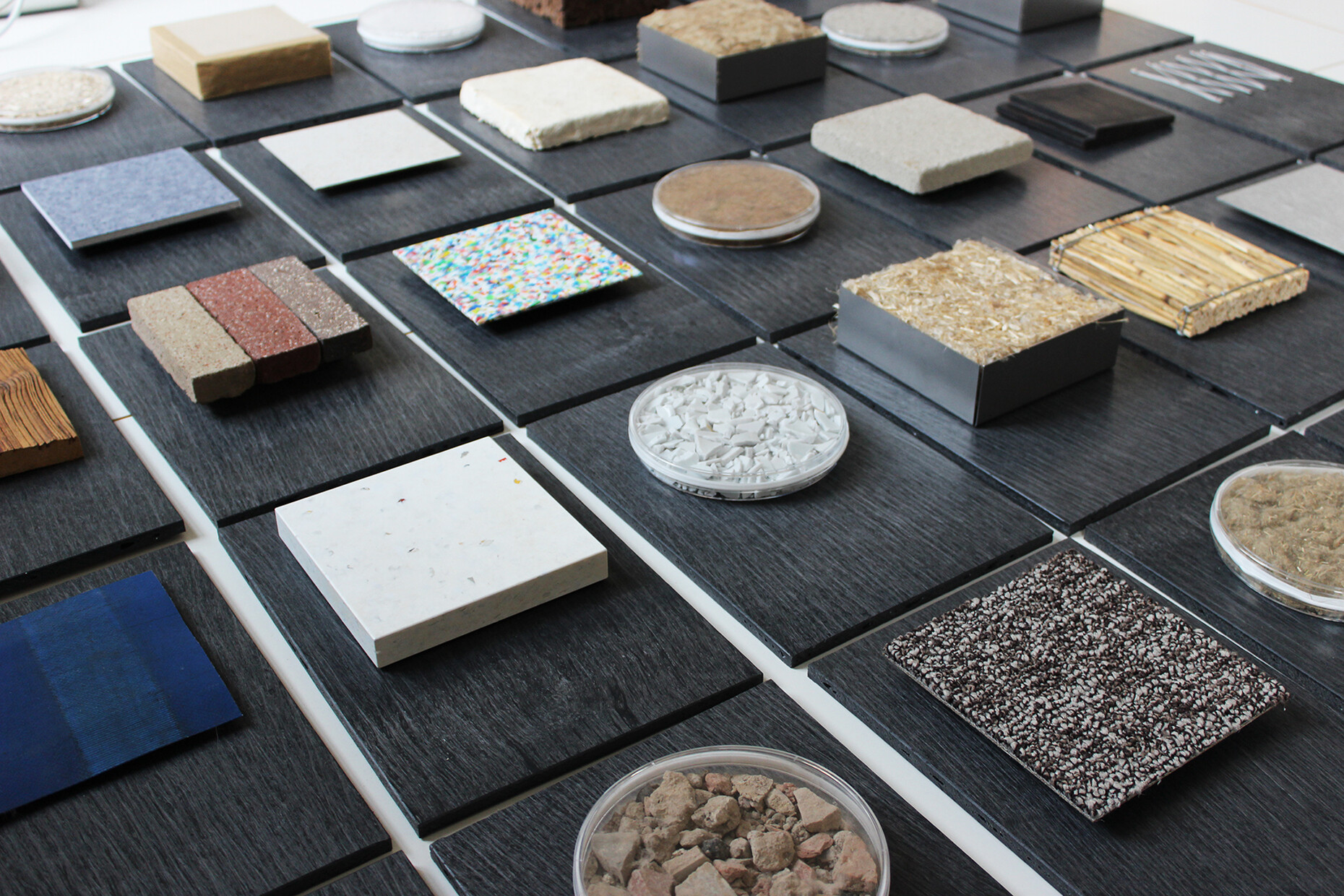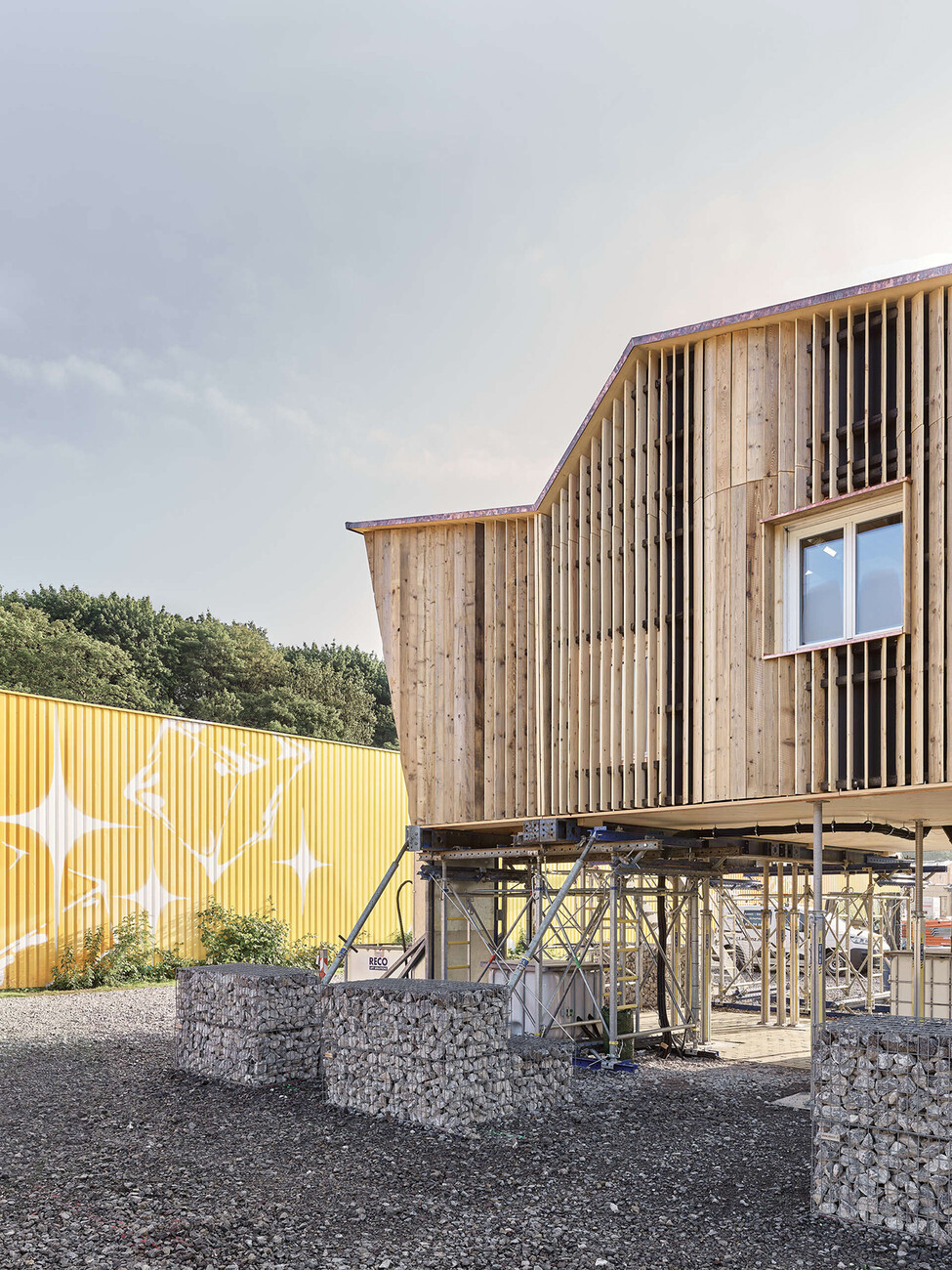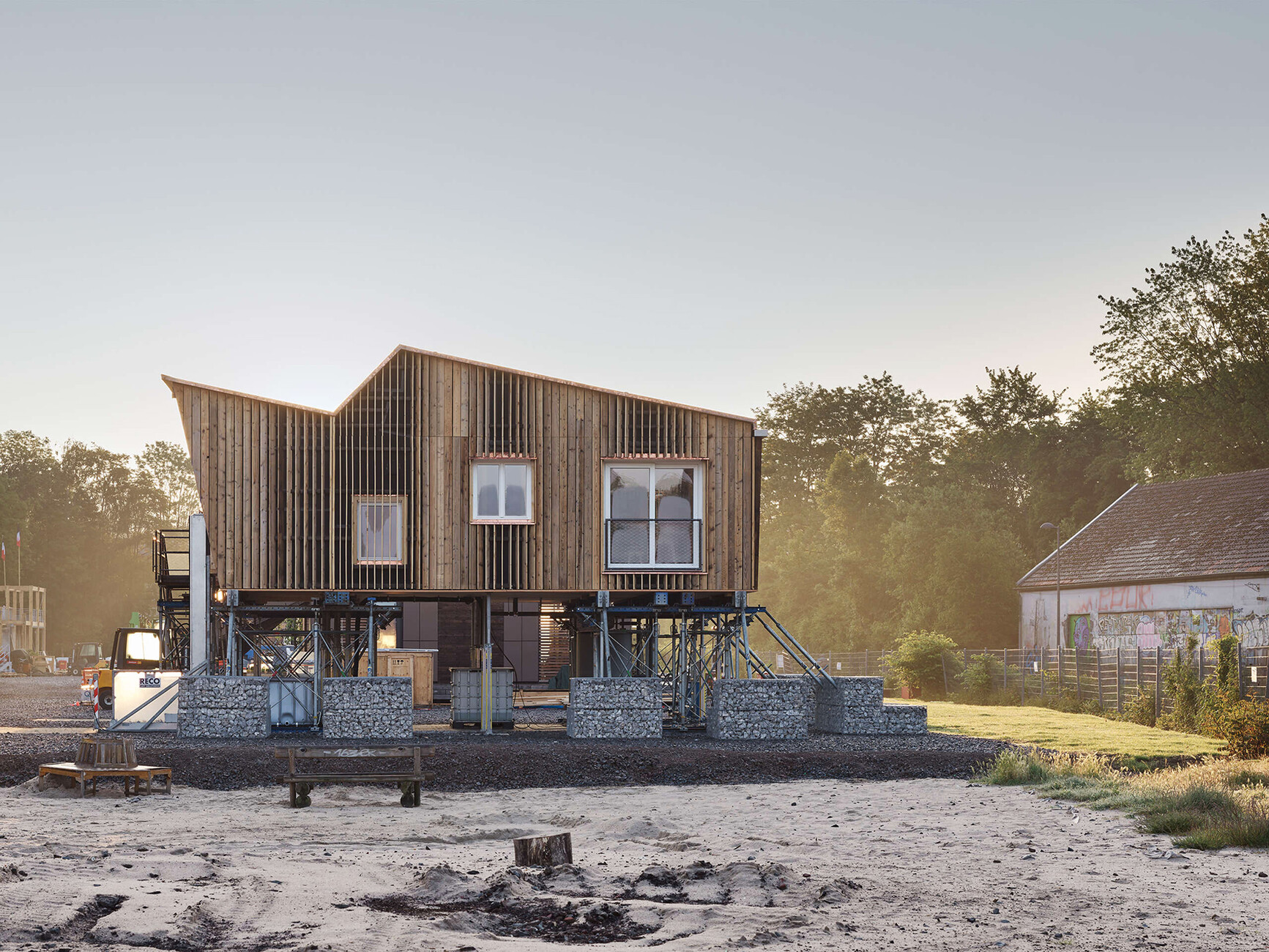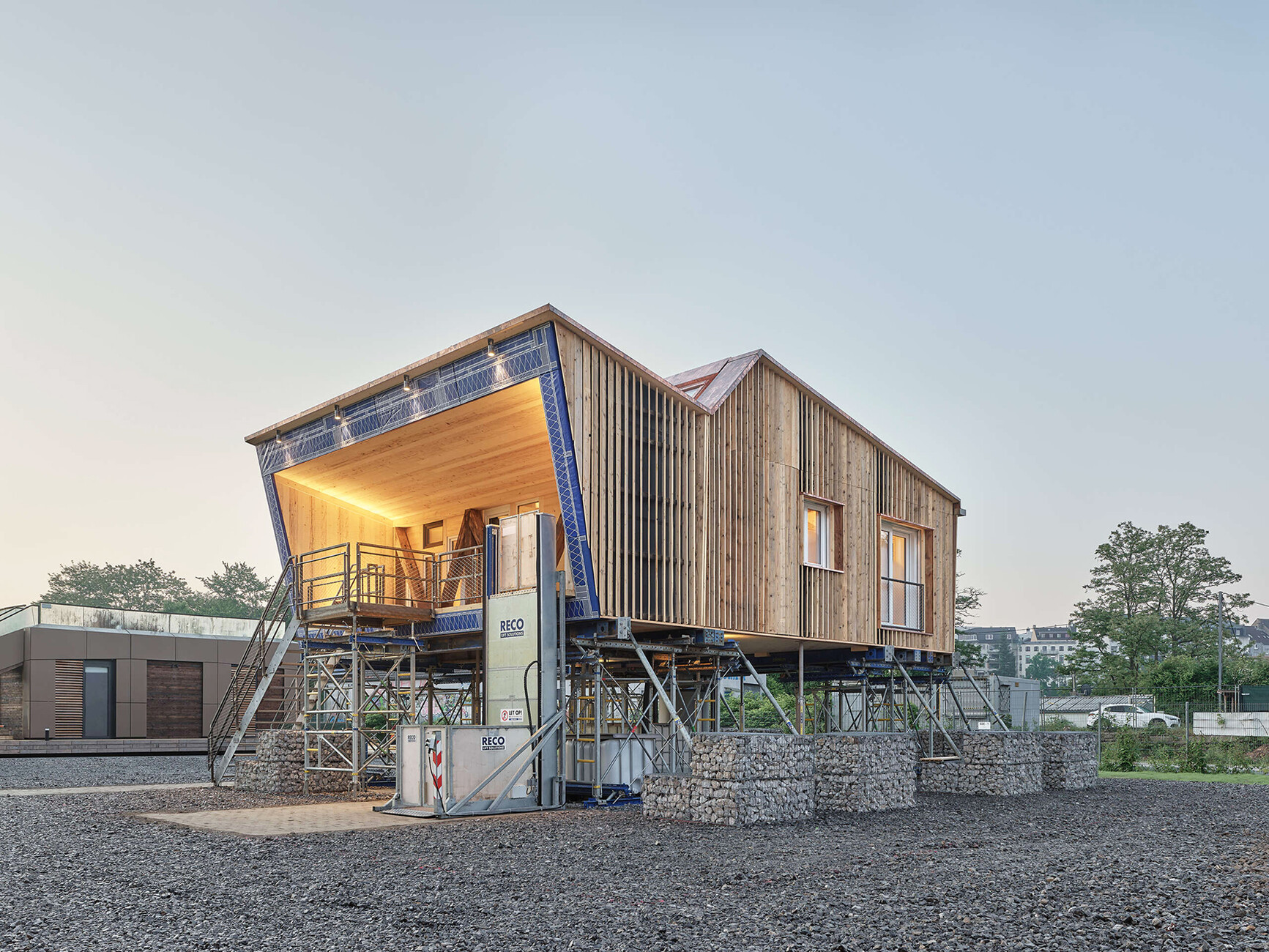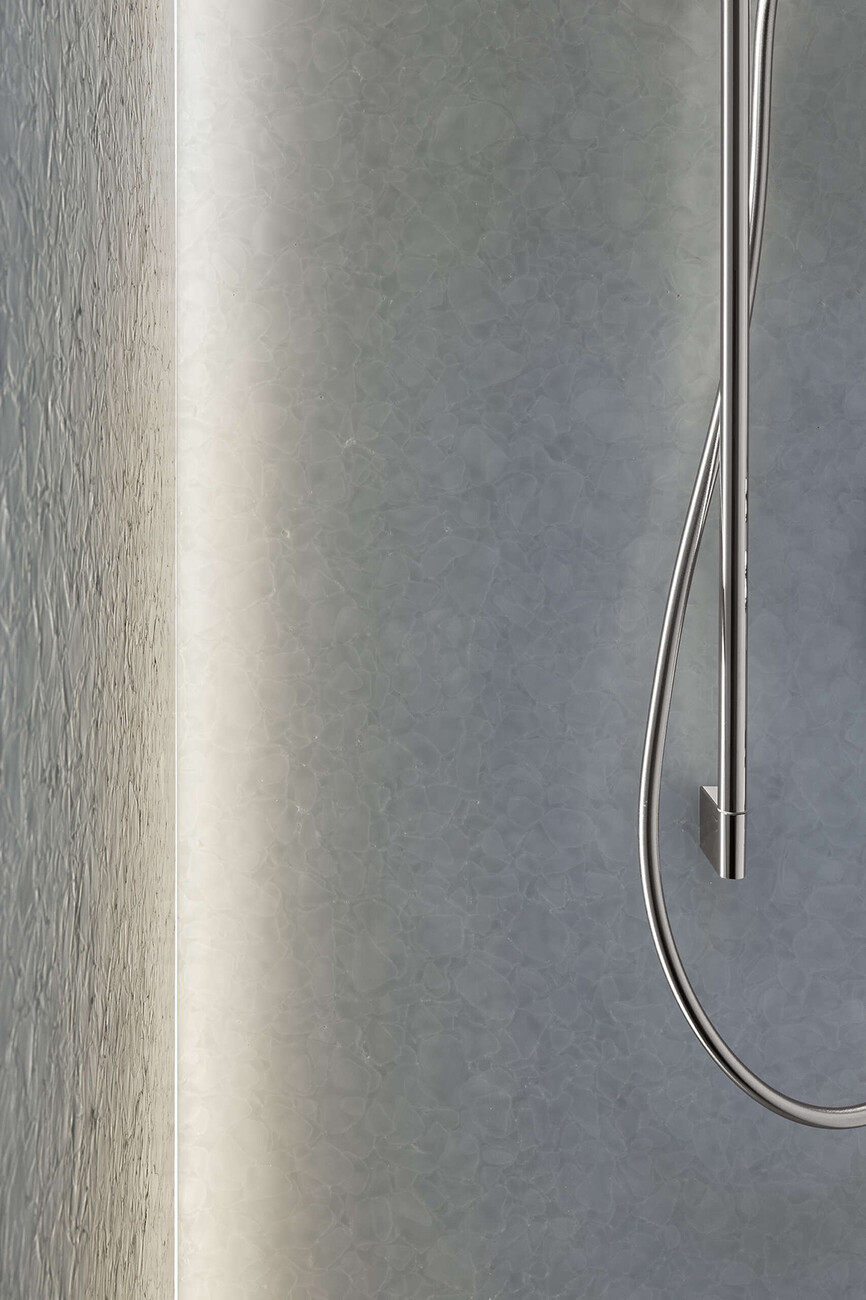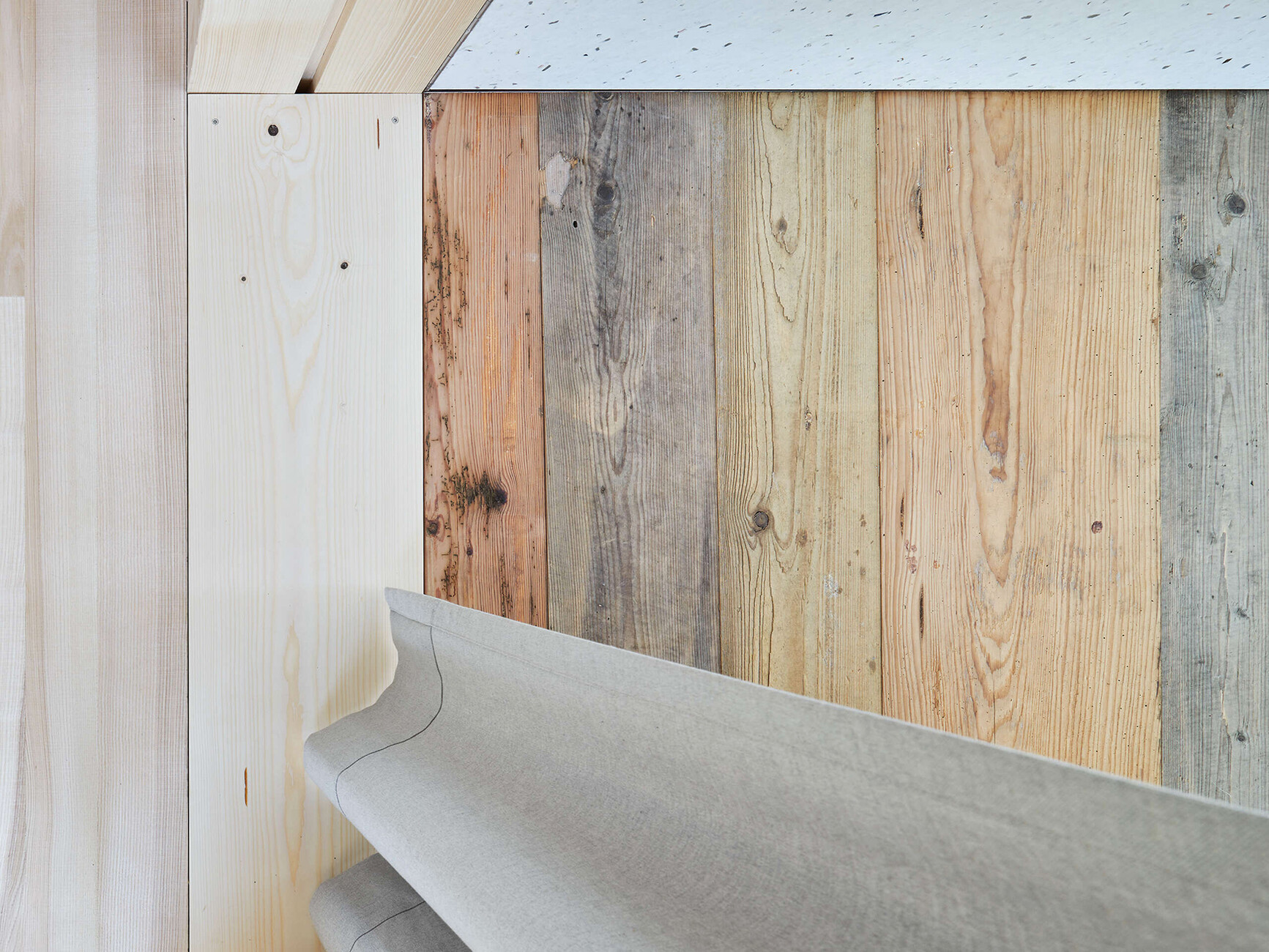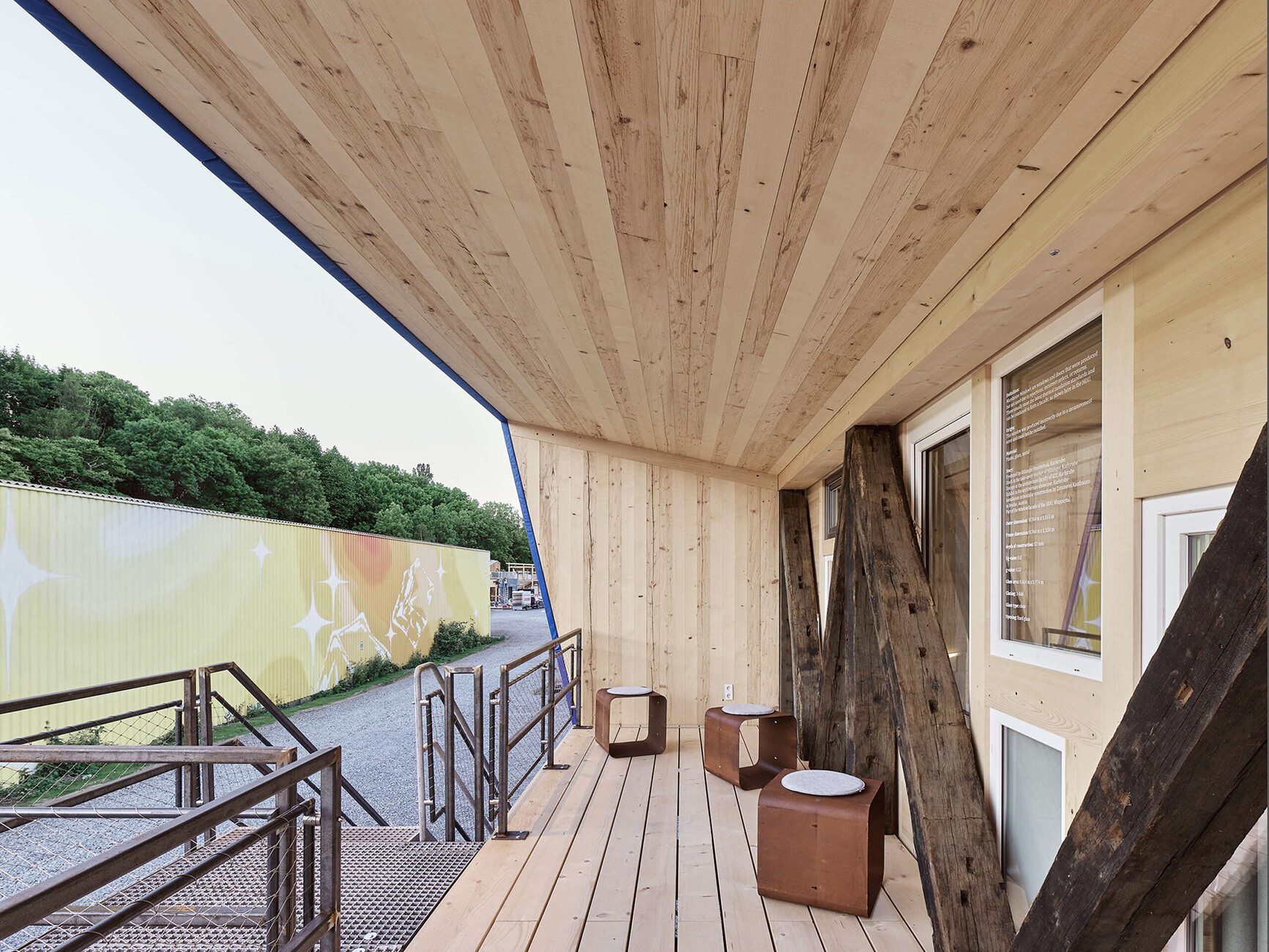SUSTAINABILITY
Urban Mining
Elisabeth Bohnet: Prof. Hebel, you hold the Chair in Sustainable Construction at the KIT in Karlsruhe. You have spent many years conducting research into resource cycles and sustainable construction materials. What is the current state of the construction industry in this respect?
Dirk Hebel: The current status can be summed up very quickly: The world continues to favor a linear business model which works on the premise that we extract raw materials from the earth, above all minerals and metals, turn them into goods and buildings, use them, and throw them away afterwards. I would argue that as things now stand well over 90 percent of firms operate according to this classic economic model. By contrast, a circular-based business model presumes that after the utilization phase, as it were, the materials and elements used for production can be recycled or reused so that I can make other products from them. This requires considering as early as the design phase how I will connect certain materials or components so that future generations can dismantle them again and ideally separate them into their various materials. This means not mixing them to produce a composite material and instead ensuring that the material can be employed again in its original quality. That’s the principle of the circular economy.
Have you detected any progress or changes since you began your research?
Dirk Hebel: What has changed significantly is the political will. Only recently the government issued a press release stating that Olaf Scholz would like to introduce the circular economy to the construction sector by 2030. In other words, the political will is there, and support is also forthcoming at the regulatory end. Now we need to think about instruments to make circular construction more attractive today even though the benefits are a long way off. I could envisage banks granting more favorable loans to people who design and build in line with the circular economy. Or that local authorities offer better conditions for the sale of their land when such a construction model is employed. Other types of construction would be more expensive in the long run because they involve follow-on costs and soil quality is impaired. These are tasks for the political decision-makers. From a technical point of view, we are already in a position today to realize buildings using circular construction.
You say "already ... today". Would it be correct to say we’ve already been at this point? Does historical building research play a role for you?
Dirk Hebel: Yes, though you should never lose sight of the social framework in which an industry and a building culture develop. After World War II in particular, the construction industry made significant progress regarding the quantity and quality of construction materials that were necessary for reconstruction. It was spurred on to constantly improve products and particularly to extend their lifespan. There was nothing wrong in that, it’s still part and parcel of an effective circular economy to design products that last and can be used for as long as possible. However, we have realized that this longevity aspect can’t be considered in isolation. You also have to try and achieve a long lifespan without resorting to materials which are harmful to our health or having to dispose of materials in a landfill at the end of their lifecycle. That is, unfortunately, largely the case specifically with composite materials. With wood-based composite materials which often contain a high percentage of synthetic adhesives you have very little choice but to dispose of them or burn them at the end of their lifespan as they are made of a mixture of biological and synthetic materials that can no longer be separated. Natural composting is no longer possible and the ash from such composite materials is so toxic after burning that it often has to be disposed of in hazardous-waste dumps. We therefore need to think in longer cycles and adopt a more sustainable mindset that includes factoring in the end of the lifecycle of such materials. We should develop new categories of bonding agents that don’t impede natural processes but are instead transformed into new nutrients within them and can be beneficial for a biological system that we ourselves depend on for our own survival.
Recycling materials play a huge role in urban mining. The latter term is not new but perhaps you wouldn’t mind telling us exactly what it means?
Dirk Hebel: The urban mine is the stock of all physical materials in our built environment that we humans have made. I can use this mine in different ways. First of all, I can adapt, expand or re-purpose existing structures and buildings. Reusing and recycling is certainly the best way to achieve a circular economy. And this is where I would appeal to the people responsible for planning. How flexible are my ground plans? How easily can I make modifications or alter the purpose in future? Is the technical fit-out simple and easy to adapt? These are issues we need to examine and discuss in greater detail at universities. Secondly, if you cannot avoid having to dismantle part of a building or demolish it altogether, you can try to extract components and materials from this urban mine and put them to new use elsewhere, either 1:1, meaning reuse them as they are, or alter them before reusing them, that is recycle them. However, as the built environment we now have was never conceived or designed for this purpose only a very small portion of the material from our urban mines is reused or recycled. We should nonetheless endeavor today to use materials that are already in their second or third lifecycle. There are already many companies devoted solely to providing planning architects with stocks of what is needed to realize new buildings, transform existing buildings, or extend and adapt them. In other words, buildings are not regarded as demolition sites and everything gets taken to a dump, disposed of but rather parts of them are re-used and recycled. Those items which can be easily removed and reused largely stem from the building’s interior and include things like door handles, door panels, door frames, floor coverings and, of course, furniture. It becomes more difficult when the components are vital parts of the structure. When structures are cast in concrete it’s almost impossible to re-use parts because it’s almost impossible to remove sections without damaging them, It’s much easier with wooden or steel structures.
If we are to make better use of these urban mines in future, we need to consider what sources of information are contained in the component itself or in digital twins that tell an engineer and planner in the distant future what assumptions were made regarding quantity and quality to determine the size of the component. And we need to connect the parts in such a way that they can be easily taken apart and separated should there be valid reasons for not re-using the entire building. Then again, it would be wrong to only consider the future. We need to realize buildings today that operate at different stages of a cycle, perhaps with brand new components and with others that are already in a later lifecycle.
We are currently engaged in setting up a new materials library which will be made available to a wide audience, not only our students but also other interested parties including planners. In this open library I not only want to encourage people to use traditional materials and construction materials but also innovative materials from the urban mine. If you look at Denmark or Norway where building permits are only granted contingent on the carbon emissions of buildings during construction and operation, there has recently been an incredibly high use of recycled and reclaimed materials in new and existing buildings as they are then classed as carbon neutral.
You mean a physical library with research literature and a database on the materials themselves?
Dirk Hebel: Yes, a central digital database that everyone can and should work on and physical material collections. We at the Department of Architecture at KIT have initiated cooperation with the material libraries at with the Wuppertal University and the Münster University of Applied Sciences and we’d now like to invite everyone to get involved in it. We will also all use the same digital base and then assemble physical collections at different places so that everyone is able to look at but also to touch the materials.
You were just talking about new materials. Can you tell us what innovative material you are doing research into?
Dirk Hebel: Minerals and metals are becoming ever scarcer; at some point we will have exhausted the finite supply beneath the earth’s surface. This also means construction costs will increase as there won’t be enough primary materials. It is therefore vital we keep the existing materials in a cycle. However, you don’t need to be a mathematician to work out that this alone will not provide the construction materials we need. This is where renewable materials come into play. We need to devote much more attention to this very wide field of biological materials – and that means in addition to wood, which is an excellent material.
For some time now we’ve been doing research into fungi and the potential of fungal mycelia as biological adhesives. Another topic is how we can use them to make wood-based panels that no longer require synthetic adhesives or insulation materials. The more research we do into these renewable, regenerative materials the more fascinated I am by what is available in nature. We just have to learn to understand such things and put them to use. Nature offers a never-ending range of things, and there could be a much stronger focus on the field of biology as a whole when it comes to creating innovative, pioneering construction materials.
Energy-efficiency and regeneratively-sourced energy form an integral part and of a new home. At what point are they incorporated into the research work?
Dirk Hebel: It’s vital that the cycle is powered using regenerative energies. There’s no use in employing wood and biological materials to build a house and seeing it as a carbon sump while on the other hand burning fossil fuels which in turn emit carbon dioxide. Similarly, the energy that is needed for the recycling when turning an old material into a new one should also ideally be regenerative. The energy issue and the resources issue need to go hand in hand.
To what extent does comfort in the home play a role?
Dirk Hebel: In recent decades, we have come to realize that you can’t solve everything with technology. We have amassed an incredible amount of knowledge on how to ventilate, light, heat and cool buildings using artificial means. We have these things down to technical perfection. However, the findings of several studies reveal that there is a huge gap between what is technically possible and what is actually being done. Human beings and the way they tick play a much more important role than we have imagined over the last 50 years. It’s good, I think, that we are starting to appreciate you don’t need to hit every problem with technology, that we need to come up with simpler systems in the future which help people but don’t relieve them of all responsibility. I welcome this new understanding of technology as a means of support rather than an attempt to replace people. There are various research projects which take this idea as a starting point and adopt a critical and innovative approach to these issues like "Einfach Bauen" (Build Simply) by Florian Nagler and Thomas Auer.
Placing such a strong focus on the human aspect is definitely a positive approach. However, we’re possibly seeing a counter trend in the efforts relating to the smart home issue, which involve making our everyday lives more technical and digitalized. Do you see these simultaneous developments as opposing trends or are they reconcilable?
Dirk Hebel: I think they already are reconciled. The idea of a smart home saw a real boom, a veritable hype in the early 2000s. Not just homes but entire cities were to be made smart. That hasn’t come about because here, again, the human being was and remains the decisive factor. There are areas where the smart home has proven really useful particularly in the field of safety technology but it’s not normal for everyone to sit in their living room with a smart phone and use it to regulate their oven or defrosting the fridge. Here, too, the initial enthusiasm has come down to a sensible level.
In other words, how we handle technology has itself developed. We no longer slavishly follow every hype but think about where technology has an important role to play and where the human aspect gets overridden. What’s more, the issue of your carbon footprint will also become relevant in this context. After all, the more technology I introduce into a building the greater that footprint becomes. I imagine that in the coming five to ten years we in Germany will also very likely see building permits being made contingent on the carbon emissions, as I mentioned previously is the case in Denmark and Norway. Such targets relating to a building as a whole rather than strict and inflexible individual specifications for components hold enormous innovative potential because it is then down to the planners to determine where a higher CO₂ figure cannot be avoided and where I can make huge savings so as to achieve a sensible overall target figure. We need to be innovative and shouldn’t stick to a rigid set of rules.
As a human being, if I like a building I feel the need to look after and preserve it, for example those from Classical Greece, or the Middle Ages, or the Baroque. That’s the human factor you mentioned. Do beauty and aesthetics play a role for sustainable construction and is it going too far to say the more beautiful, the more sustainable?
Dirk Hebel: The centuries-old traditional values in the architecture of our building culture, the beauty, longevity, and robustness – in other words the Vitruvian values still apply as much today as they did a thousand years ago. However, society is constantly evolving, and the question is what other values are important alongside these original ones. A building is not automatically beautiful or even sustainable simply because it uses regenerative energy for heating. I would agree with you that if the occupants consider a building attractive and it operates well then it’s taken care of, so it might be more sustainable because it is loved and maintained and as a result it probably survives longer. However, merely because it’s attractive and perhaps lasts longer does not automatically make it sustainable. To my mind, we are currently seeing a shift in values and these new values modify and complement the existing ones. That can make our profession somewhat more complicated. Today, architects have to be familiar with many more fields in order to appreciate what chimes with contemporary building culture, which now also includes the sustainability issue. Universities have an important task in this respect, as they must do the research and develop the new ideas, make them accessible, explain them in simple words and then ensure ideas are implemented. Only 15 years ago, universities did not accord much time to teaching students about circularity in the construction business. That is no longer the case with the current generation of students; they expect to be taught about innovative and alternative approaches. However, since we as lecturers did not always receive such a training ourselves, we are self-taught to some extent and learn alongside our students. I think that’s a good situation particularly at the present time which is so ridden with various crises. This is an opportunity for new ground to be broken and it’s something we need to tackle together across all the generations.
How do you assess the situation globally? In other countries, other climatic zones: Do you find similar projects and ideas everywhere, or are there big differences between the various regions?
Dirk Hebel: That depends on conditions in the respective societies. If you take a look at East Africa, where I often spend time, in countries torn apart by conflict and unrest, it stands to reason that ecological issues are not prioritized. The priorities are: How do I provide housing for millions of people along with water, energy, safety, and dignity? These are also important considerations for us, although to a different extent and on a different scale. If we didn’t have such a shortfall in affordable housing in Germany, we could make progress in other areas. Things progress at different speeds depending on the challenges societies face.
However, it is encouraging that in Europe we are not only highlighting the importance of circularity in construction but also in general on whether products can be repaired, i.e., the issue of how we can use items for as long as possible. How long must a product last and when it no longer works how simple or difficult is it to repair? How long must firms make spare parts available for? How willing are firms to share data so that these spare parts can just as easily be produced elsewhere? These are important issues for the circular economy and a topic for society that advances at different speeds. Nonetheless, developments will speed up and it will no longer take several generations before we can put things into practice.
The majority of our readers work as architects, planners and designers. Can you tell us about your favorite realized project?
Dirk Hebel: We are always building test labs, doing so is also part of our mission as a university. In 2022, we won the largest international construction competition for universities, the Solar Decathlon, with our RoofKIT project. It is always great to see how motivated today’s generation of architects and engineers is when it comes to tackling difficult issues. And then with how much passion and commitment this generation drives their ideas forward and then expects industry to provide specific certain or begins to develop them themselves if they aren’t available. To return to the question regarding your readers. The issues are mutually dependent. We need a broad range of materials and products which have truly embraced the idea of circularity. Sadly, I have to say that during my recent visits to trade fairs all too often I find that though a lot is said about how important circularity and sustainability are, after a couple of questions you are given answers that don’t ring true. I really would like us to be more honest with one another here, to look at the topic in all its complexity and implement it in a way that everyone understands it. The circular economy offers immense potential for innovations.
